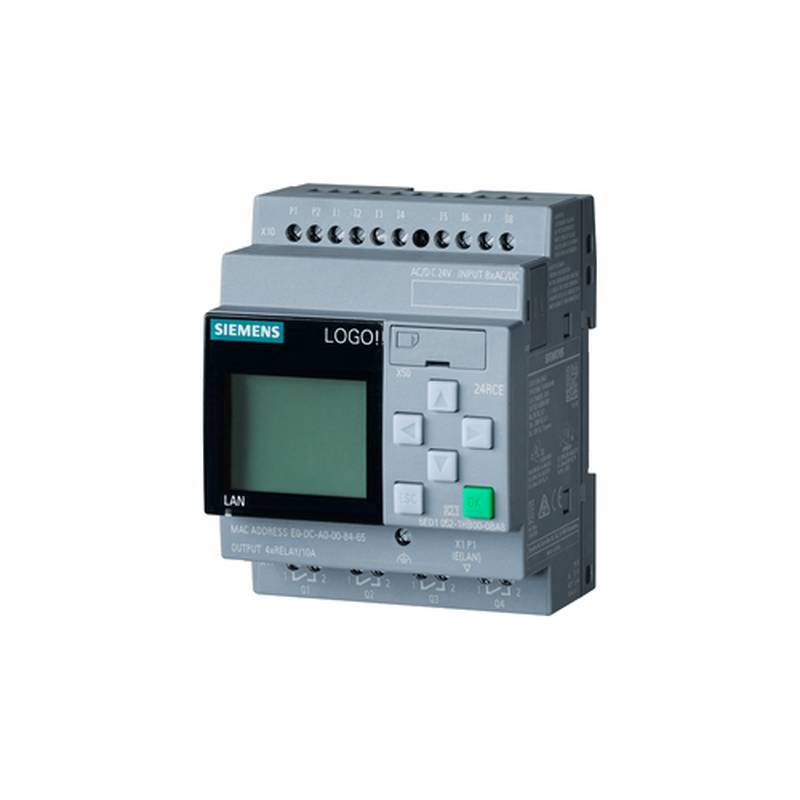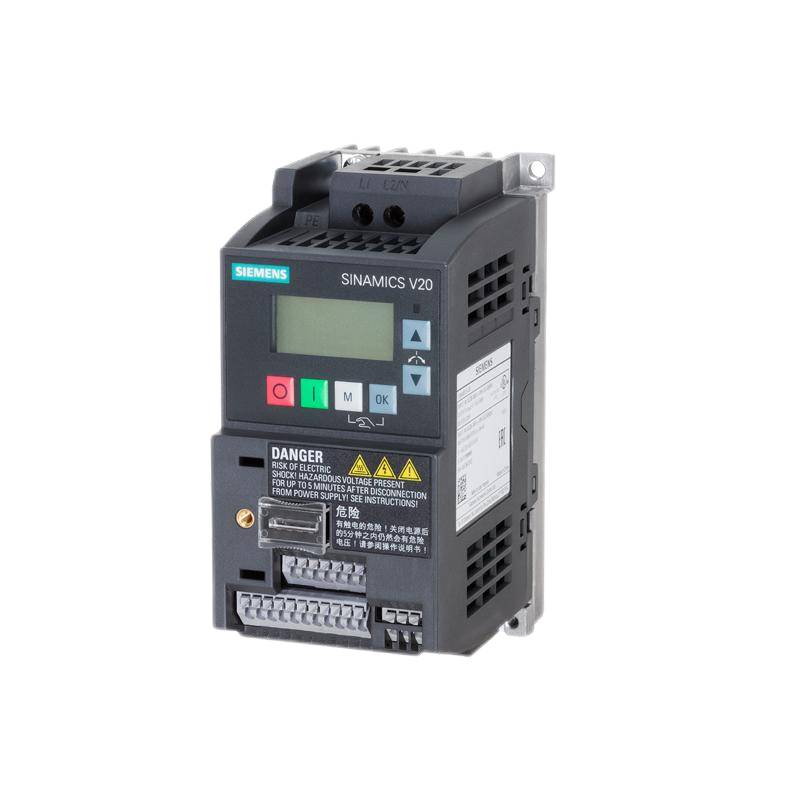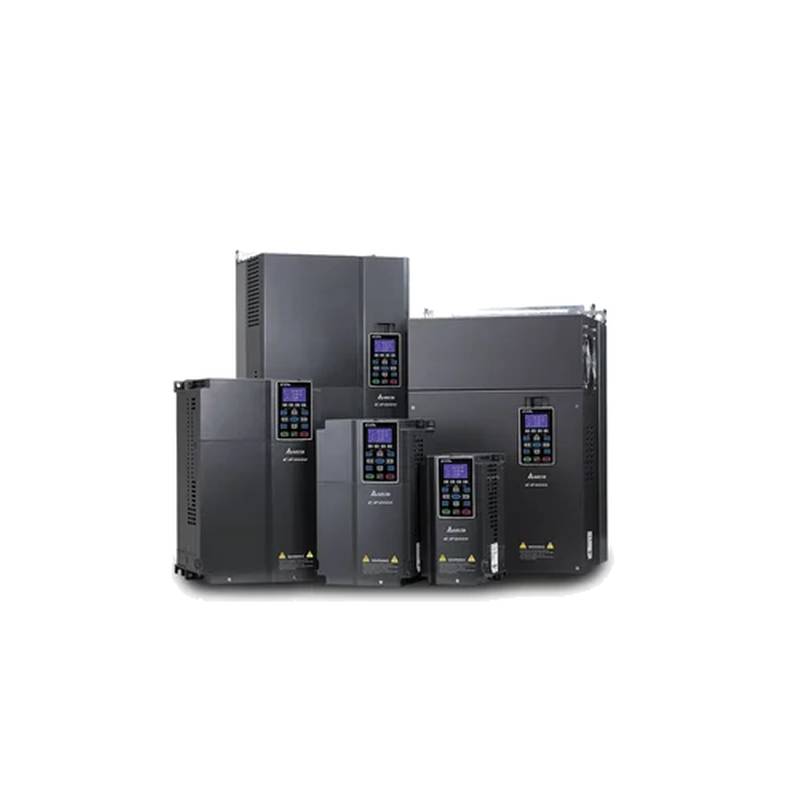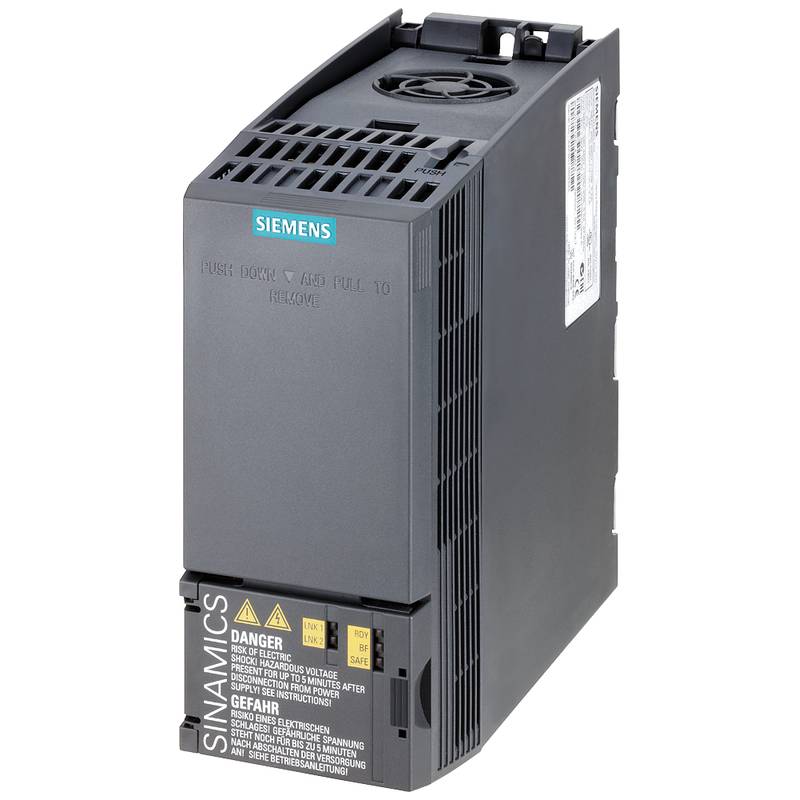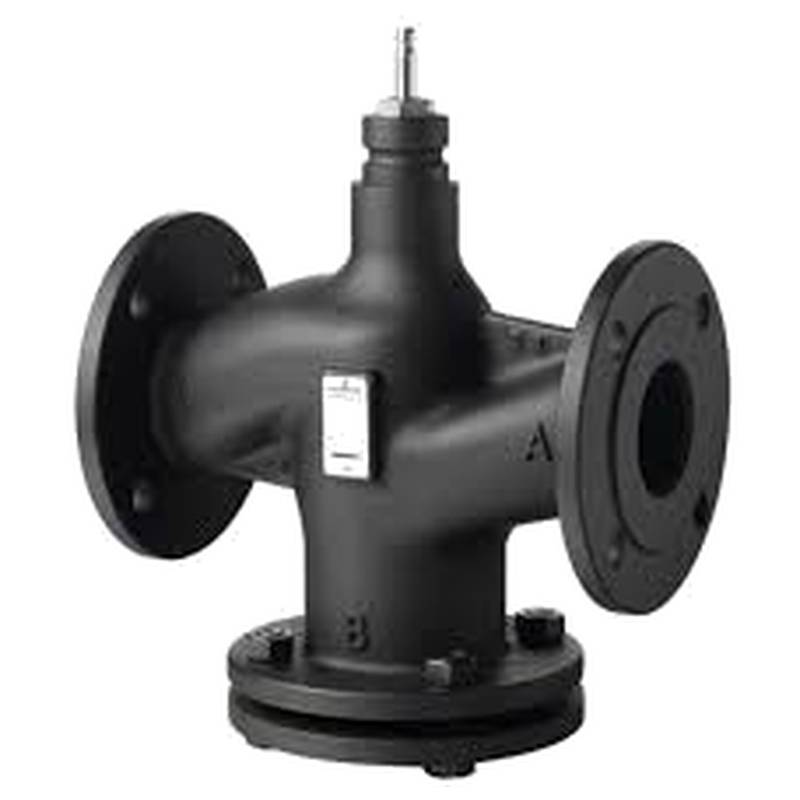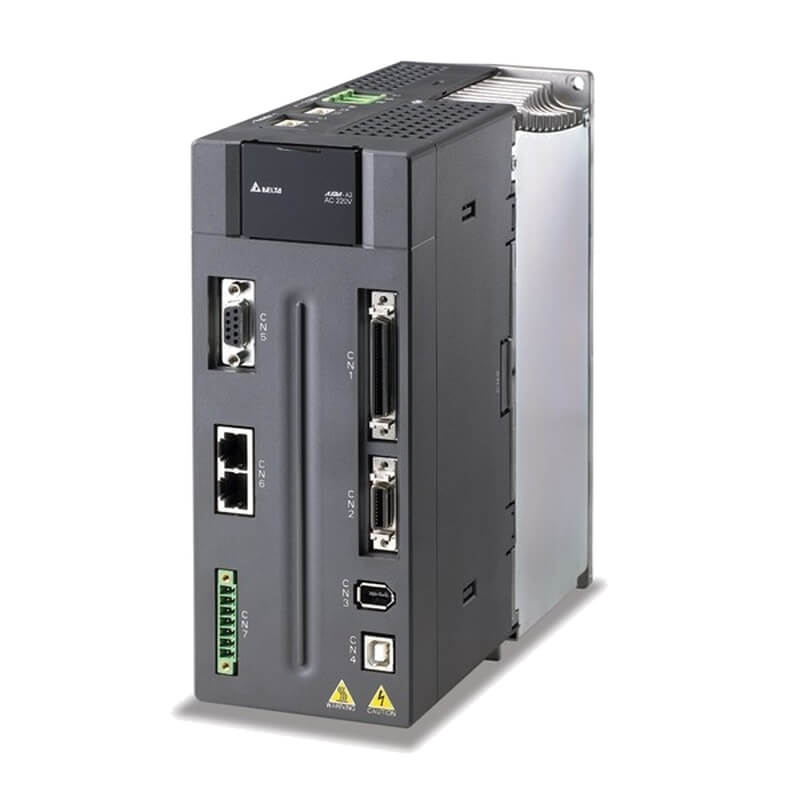
The Siemens 6ED1052-1HB08-0BA2 is a crucial component for industrial automation, offering precise control over analog output signals. This 2-channel PLC analog output module excels in applications demanding fine-tuned process management, providing reliable performance and seamless integration into Siemens' LOGO! 8 automation ecosystem. Its robust design ensures operational stability in challenging industrial environments, making it a preferred choice for enhanced process efficiency and accuracy. Key technical parameters include its voltage output range, current sinking/sourcing capabilities, and precise resolution, all contributing to its suitability for sophisticated control tasks.
Product Specifications
| Feature | Specification |
| :------------------- | :------------------------------------------- |
| Product Type | Analog Output Module |
| Channels | 2 |
| Output Type | Voltage/Current |
| Voltage Output Range | -10 V to +10 V |
| Current Output Range | 0 mA to 20 mA |
| Resolution | 12-bit |
| Supply Voltage | 24 V DC |
| Interface | LOGO! 8 |
| Temperature Range | -20 °C to +60 °C |
| Dimensions (W x H x D) | 35.5 mm x 90 mm x 57 mm |
| Protection Class | IP20 |
Core Features & Market Positioning
The Siemens 6ED1052-1HB08-0BA2 distinguishes itself through its high-resolution 12-bit conversion, enabling exceptionally precise analog signal generation essential for sophisticated control loops in process industries. Its dual-channel capability offers flexibility, allowing for simultaneous control of two independent analog outputs, thereby increasing system density and reducing footprint. Positioned within the LOGO! 8 platform, this module benefits from the system's intuitive programming environment and extensive communication options, making it a competitive solution for small to medium-sized automation projects where ease of use and performance are paramount. The module's ability to support both voltage and current outputs broadens its application scope, accommodating a wide array of actuators and instrumentation.
Key Application Scenarios
This analog output module finds its primary utility in applications requiring precise variable control, such as regulating pump speeds for optimal flow rates in water treatment plants or managing the intensity of heating elements in industrial ovens. It is instrumental in HVAC systems for fine-tuning air flow and temperature control, ensuring optimal comfort and energy efficiency. Furthermore, in manufacturing environments, the Siemens 6ED1052-1HB08-0BA2 is employed for precise valve positioning in chemical processing or for controlling motor drives where smooth acceleration and deceleration are critical. Its integration within the LOGO! 8 platform makes it ideal for machine builders and system integrators looking for a compact, powerful, and cost-effective solution for specialized automation tasks.
Practical System Integration Guidance
Integrating the Siemens 6ED1052-1HB08-0BA2 into a LOGO! 8 system is straightforward. The module connects directly to the LOGO! base unit via its integrated connector, requiring minimal wiring. Power is supplied via the standard 24 V DC from the LOGO! power supply. For analog output configuration, users employ the LOGO!Soft Comfort software, mapping the desired output values to specific memory addresses or function blocks. For instance, to control a variable speed drive via a 0-10V signal, a PWM block or a direct analog output instruction in LOGO!Soft Comfort can be configured to output the required voltage based on process variables. Ensure proper grounding and adhere to wiring standards to prevent signal interference and ensure operational reliability.
Operation and Risk Mitigation
Safe operation of the 6ED1052-1HB08-0BA2 necessitates adherence to electrical safety standards and proper installation. Always disconnect power before performing any wiring or maintenance. The module's built-in diagnostics can indicate faults, such as output overloads or communication errors, which are typically displayed via status LEDs on the module itself or reported through the LOGO! base unit's diagnostic functions. Users should consult the LOGO! 8 system manual for specific fault codes and troubleshooting procedures. Overloading the output channels beyond their specified current or voltage limits is a common risk that can lead to module damage; proper actuator selection and load calculation are crucial.
Scalability & Long-Term Value
The Siemens 6ED1052-1HB08-0BA2 offers excellent scalability within the LOGO! 8 ecosystem. Additional I/O modules can be easily added to expand system capabilities as automation requirements grow, maintaining a cohesive and integrated control solution. Its compatibility with a wide range of Siemens LOGO! base units ensures future-proof integration and accessibility. For environments embracing Industry 4.0 principles, the LOGO! 8 platform, and by extension this analog output module, can be integrated with higher-level SCADA systems or cloud platforms via various communication protocols, enabling data logging, remote monitoring, and advanced analytics for enhanced operational intelligence.
Frequently Asked Questions
What are the voltage and current output ranges of the Siemens 6ED1052-1HB08-0BA2?
The module supports a voltage output range of -10 V to +10 V. It also provides a current output capability, typically from 0 mA to 20 mA. This dual capability offers flexibility for diverse actuator and instrumentation requirements in industrial settings.
These specifications allow for precise control of devices like variable frequency drives, control valves, or other analog-controlled equipment. The ability to switch between voltage and current output modes makes the module highly adaptable for various signal transmission standards common in automation.
Consider the load impedance when selecting between voltage or current output to ensure proper signal integrity and device performance. Always consult the product manual for specific output characteristics and limitations.
How do I wire the Siemens 6ED1052-1HB08-0BA2 to my LOGO! 8 system?
The module connects directly to the LOGO! 8 base unit using the integrated connector, requiring no external wiring for power or data between the base and the module itself. Power for the module, typically 24 V DC, is supplied through the LOGO! power supply unit connected to the base.
Ensure that the power supply meets the module's and the entire LOGO! system's power requirements. Observe correct polarity when connecting the power supply to the LOGO! base unit.
For the analog output terminals, refer to the LOGO! 8 manual for specific connection diagrams based on whether you are using voltage or current output. Proper grounding is essential to prevent electrical noise and ensure signal accuracy.
What is the resolution of the analog output signals from this Siemens module?
The Siemens 6ED1052-1HB08-0BA2 features a 12-bit resolution for its analog outputs. This provides a high degree of precision in signal generation, with 4096 discrete steps across the full output range.
A 12-bit resolution allows for very fine adjustments of analog signals, which is critical for applications demanding precise control over processes, such as delicate chemical dosing or smooth motor speed regulation.
This enhanced precision minimizes signal quantization errors, leading to more stable and accurate control outcomes compared to modules with lower resolutions, contributing to improved product quality and process efficiency.
Can the Siemens 6ED1052-1HB08-0BA2 be used with older versions of Siemens LOGO! or other PLC brands?
The 6ED1052-1HB08-0BA2 is specifically designed for the Siemens LOGO! 8 series of logic modules. Its interface and communication protocols are tailored for seamless integration within this platform.
While LOGO! modules share some basic principles, this specific analog output module is not designed to be directly compatible with older LOGO! generations (e.g., LOGO! 0BA5, 0BA6, 0BA7) or with PLCs from other manufacturers without significant custom interfacing.
For integration with other PLC brands or older Siemens systems, alternative analog output modules designed for those specific platforms would be required. Always verify compatibility before purchase or installation.
What type of loads can be driven by the Siemens 6ED1052-1HB08-0BA2?
The module can drive various types of loads, including actuators that accept voltage signals (e.g., 0-10V) or current signals (e.g., 4-20mA, though the module's range is 0-20mA). Examples include variable frequency drives, control valves, and analog meters.
Ensure that the load's power requirements (voltage and current) fall within the specified limits of the module's output channels to prevent damage or malfunction. Check the maximum current sinking or sourcing capability.
For inductive loads or loads requiring higher current/voltage, an external power amplifier or relay might be necessary. Always consult the datasheets of both the module and the driven device for compatibility.
How do I program the analog output on the Siemens 6ED1052-1HB08-0BA2 using LOGO!Soft Comfort?
In LOGO!Soft Comfort, you assign an analog output instruction to the specific output channel you wish to control. You can then link this instruction to variables, mathematical functions, or PID controller outputs within your program.
For example, you can use a "MAP" function to scale a digital value (e.g., from a sensor reading or a user input) to the desired analog output range (e.g., 0-10V). This allows for dynamic control based on process conditions.
Ensure that the selected output type (voltage or current) in the software matches the physical wiring and the requirements of the connected device. Proper configuration is key to achieving the desired automation outcome.
What are the typical operating temperature and storage conditions for this module?
The Siemens 6ED1052-1HB08-0BA2 is designed for industrial environments and typically operates within a temperature range of -20 °C to +60 °C. Storage conditions should generally be within a similar, albeit broader, temperature and humidity range.
Adhering to these specified environmental conditions is crucial for ensuring the longevity and reliable performance of the module. Extreme temperatures can affect electronic component lifespan and accuracy.
Avoid exposing the module to direct sunlight, excessive moisture, or corrosive atmospheres. Proper ventilation within the control cabinet is also important to dissipate heat generated during operation.
What diagnostic information is available for the Siemens 6ED1052-1HB08-0BA2?
Diagnostic information is typically available through status LEDs on the module itself and can be accessed via the LOGO! 8 base unit's diagnostic features within LOGO!Soft Comfort. These indicate operational status and potential faults.
Faults might include output circuit errors, communication issues with the base unit, or power supply problems. These are usually indicated by specific LED patterns or error codes reported in the software.
Refer to the LOGO! 8 system manual for a comprehensive guide to understanding the LED indicators and interpreting diagnostic messages to effectively troubleshoot any issues.
Is this module suitable for safety-related applications?
The Siemens 6ED1052-1HB08-0BA2 is an analog output module designed for standard control tasks, not for safety-integrated functions. Safety-related applications require specialized safety PLCs and safety-rated output modules.
For applications where failure of the analog output could lead to hazardous situations, a certified safety solution must be implemented. This typically involves redundant systems and safety logic controllers.
Always consult the relevant safety standards (e.g., IEC 61508, ISO 13849) and Siemens' safety portfolio to select appropriate components for safety-critical functions. This module should not be relied upon for safety integrity.
What is the IP rating of the Siemens 6ED1052-1HB08-0BA2?
The Siemens 6ED1052-1HB08-0BA2 has an IP20 protection rating. This signifies that it is protected against solid objects greater than 12.5 mm (finger-safe) but offers no protection against water ingress.
Therefore, the module should be installed in an enclosure or control panel that provides adequate protection against environmental factors like dust, moisture, and liquids.
Ensure the control cabinet is properly sealed and maintained to protect the module and other components from harsh environmental conditions, which is standard practice in industrial automation.














